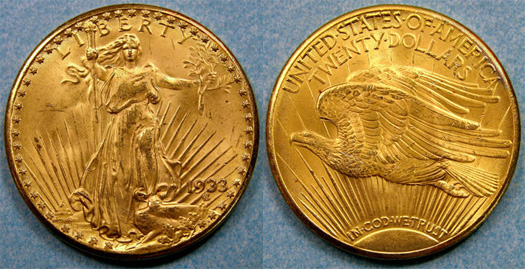Imagine finding an old coin collection of your now deceased parents. Some of it is junk, but then you stumble upon something special. You go to a mint for authentication, and you leave it there momentarily, only to be told that the US government has seized it with no recompense and that there’s nothing you can do. This is exactly what happened to the Switt family.

A little context: The 1933 Saint-Gaudens double eagle coin was valued originally at only $20, but one owned by King Farouk of Egypt sold for a little over $7.5 million at a Sotheby’s auction in 2002.
Years following the U.S. abandoning the gold standard, a majority of the 445,500 double eagles that the Philadelphia Mint had struck were melted into bars of gold.
However, a Philadelphia Mint cashier had managed to give or sell some of them to a local coin dealer, Israel Switt.
In 2003, Switt’s family, including his daughter, Joan Langbord, and her two sons, drilled opened a small safety deposit box that had belonged to Israel. What they found were 10 1933 Saint-Gaudens double eagle coins.
When the family lent the coins to the Philadelphia Mint for authentication, the federal government chose to seize it without compensating the family.
The family rightfully sued, saying the coins belonged to them.
In 2011, a jury claimed that the rare coins belonged to the US government, which led to an appeal by the family.
Last week, Judge Legrome Davis of the Eastern District Court of Pennsylvania, affirmed the original decision, stating “the coins in question were not lawfully removed from the United States Mint.”
The attorney for the family, Barry Berke, told ABCNews.com, “This is a case that raises many novel legal questions, including the limits on the government’s power to confiscate property. The Langbord family will be filing an appeal and looks forward to addressing these important issues before the 3rd Circuit.”
The family states that in a similar seizer of the 1933 double eagle, the government actually split the proceeds with the original owner after the coin sold for $7.59 million in 2002, according to Coinbooks.org.
Even if the original selling of the coins were under some controversy, the US government wouldn’t have even known they existed if the family hadn’t opened up the safety deposit box, and brought them to the Philadelphia mint.
What do you think? Is the family owed at least a portion of the sale of these rare coins?






